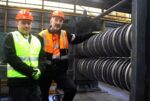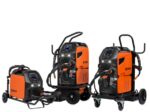Confident connections
Central Coast-based 4id Solutions opens the door to the true potential of the connected world – its leading-edge technologies enabling customers to track, trace, and protect important assets. Using intelligent labelling, credentials, wearables, and other digital identity technologies, 4id Solutions offers tracking capability to many sectors including healthcare and med tech; manufacturing, transport, and logistics; banking and finance; controlled substances; and entertainment management. 4id Solutions is a worthy nomination for the Hunter Manufacturing Awards (HMA) in three categories: Excellence in Innovation; Excellence in Manufacturing Capability; and Manufacturer of the Year – fewer than 50 employees. The Hunter Manufacturing Awards represents all businesses actively engaged in the manufacturing sector, including their allies, in the Upper Hunter, Lower Hunter, Central Coast, Lake Macquarie, Newcastle, Port Stephens, and Mid-North Coast regions. HMA has a loyal following thanks to its efforts of inspiring and encouraging vibrant and enduring manufacturing in these regions. A mission to promote best practices in manufacturing motivates the HMA. In highlighting the achievements of the best, it encourages and sustains the aspirations of those who want to join them. 4id Solutions is one such operation. 4id Solutions enables enterprises concerned with the wellbeing of people and the movement of material assets to validate, verify, and capture data with confidence. “It is accurate, secure, and reliable for the visibility you need – when you need it most,” says 4id Solutions Marketing Coordinator Michael Glenn. “Use cases include regulatory compliance, item traceability, supply chain security, product authentication, access control, and consumer engagement.” From industry-compliant labels and tags, radio-frequency identification (RFID) conversion and high-resolution printing, encoding and encryption, 4id Solutions has an answer. Powered by innovation, it offers unparalleled accuracy, and optimal cost effectiveness. High-quality labels and tags have various uses including asset tracking and logistics for highly regulated industries. Wristbands and wearables […]










